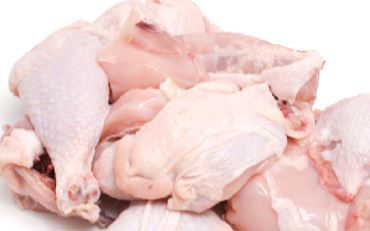Nutritional benefits of poultry valued in US

US shoppers recognise the variety of nutrition benefits meat and poultry offer, and place a high value on convenience, variety and transparency when making purchasing decisions in the meat aisle, according to the Power of Meat survey released by the Food Marketing Institute (FMI) and the North American Meat Institute (NAMI).
FMI and NAMI unveiled the 11th annual report, conducted by 210 Analytics, LLC, in partnership with The Cryovac Brand, a part of Sealed Air’s Food Care Division, at the Annual Meat Conference in Nashville, Tennessee. The report examines meat purchasing, preparation and consumption trends through the eyes of the shopper.
Poultry an important source of protein
The majority of shoppers—more than eight in 10—affirmed the important role meat and poultry play as sources of protein and other key nutrients in a healthy, balanced diet.
The annual report series found consumers were most likely to say red meat, including beef, pork and lamb, were important to energy levels and provided nutrients such as iron and protein. Meanwhile, maintaining a healthy weight and receiving vital nutrients were factors associated with poultry. The findings were consistent across generations, with millennials only slightly less likely to cite meat and poultry’s health benefits.
Consumer demand for transparency in poultry industry
“Meat and poultry remain shoppers’ go-to source for protein and essential nutrients,” said NAMI president and CEO Barry Carpenter. “The industry is working hard to respond to consumer demands for transparency, and is continuing to offer a variety of convenient, flavourful and nutritious fresh and processed products to an increasingly diverse consumer base, particularly with regards to millennial shoppers, whose influence is growing at retail.”
Supermarkets strengthened their position as shoppers’ primary destination for meat and poultry, though consumers increasingly chose alternative channels, like farmers’ markets, dollar stores, farm-direct and online stores, for certain meat and poultry purchases. This trend was particularly evident among millennial consumers, who exhibited a higher propensity to shop at alternative outlets for meat products.
Poultry purchasing decision drivers
Regarding purchasing decision drivers, price per pound, along with total package price, emerged as the dominant factor influencing meat and poultry product purchases, with product appearance falling to third place.
Total package price proved more important to small households and millennials, suggesting the future importance of package size variety and price ceilings. Along with price, consumer desire for transparency in the product and production process drove sales gains, with segments such as antibiotic-free, grass-fed, hormone-free, natural and organic meat and poultry recording high growth percentages, despite remaining niche market segments.
Join 31,000+ subscribers
Subscribe to our newsletter to stay updated about all the need-to-know content in the poultry sector, three times a week. Beheer
Beheer











 WP Admin
WP Admin  Bewerk bericht
Bewerk bericht